#sergey filippov
Text

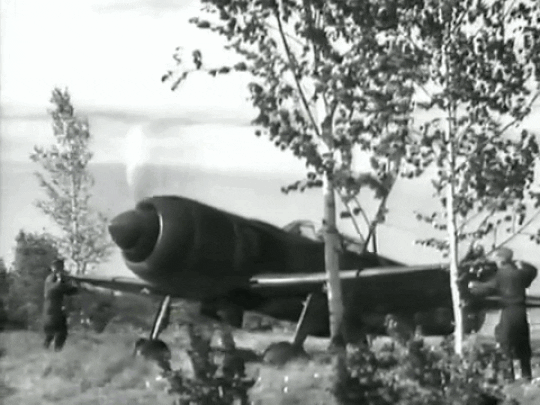
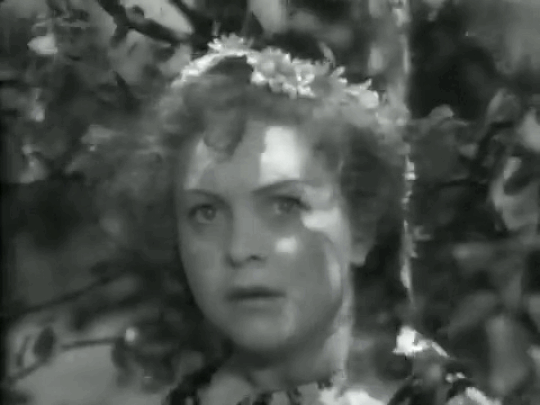
Mikhail Zharov, {1946} Беспокойное хозяйство (A Noisy Household)
#film#gif#mikhail zharov#Беспокойное хозяйство#a noisy household#Lyudmila Tselikovskaya#Vitali Doronin#Sergey Filippov#1946#flowers#black and white#guns#war#1940s#feature length#photos in films#male filmmakers#faces#people#landscapes
4 notes
·
View notes
Text

#movies#polls#12 chairs#12 chairs 1971#12 chairs movie#70s movies#leonid gaidai#archil gomiashvili#sergei filippov#mikhail pugovkin#requested#have you seen this movie poll
47 notes
·
View notes
Photo










Kashchey the Immortal (1944)
#kashchey the immortal#aleksandr rou#georgi millyar#sergei stolyarov#galina grigoryeva#sergei filippov#talks
12 notes
·
View notes
Text
Powerful Russian Delegation Visited Marwah Studios

Noida: A team of Russians comprising of Educationists, Film Makers, Media Persons, and Social Workers visited Marwah Studios to see for themselves how we are organized at Noida Film City and conducting film, television, media, and education business from the international headquarters of AAFT,” said Dr Sandeep Marwah President of Marwah Studios.
Dr Marwah briefed all the members of this powerful delegation from Russia about the establishment of Noida Film City, Marwah Studios -the first professional studios of North India and AAFT the first private film school of the country and the formation of Indo Russia Film and Cultural Forum. He offered numerous facilities to the delegates and their organizations under Indo Russia Film and Cultural Forum programs.
The group from Russia consists of Marine VOSKANYAN,Head of the Smart Civilization Institute; Analyst of the Department of Strategic Projects, Russian State University for the Humanities, Yuri FILIPPOV Head of the Department of Strategic Projects of the Russian State University for the Humanities, Sergei STOLYAROV, Director for Strategic Development, Moscow International Higher Business School MIRBIS, Tatiana SHAUMYAN Head of the Center for Indian Studies Institute of Oriental Studies of the Russian Academy of Sciences, Dr. Roman LUNKIN Deputy Director of the Institute of Europe of the Russian Academy of Sciences & Head of the Center for the Study of Religion and Society Institute of Europe of the Russian Academy of Sciences, Editor in Chief of the journal “Contemporary Europe“ and Kirill KOSTIN, Head of the Project Office, NGO “Smart Civilization”; Analyst of the Department of Strategic Projects, Russian State University for the Humanities.
Artur BOGACHEV, Head of the International Relations Department, NGO “Smart Civilization”; Analyst of the Department of Strategic Projects, Russian State University for the Humanities. Anna SARAFANOVA, Project Manager, NGO “Smart Civilization”; Analyst of the Department of Strategic Projects, Russian State University for the Humanities, Iana ZHEREBTSOVA, Assistant to the Vice Rector for the International Cooperation, Russian State University for the Humanities were also part of the team.
The delegates were accompanied by film Production team including Yekaterina MOSTOVAYA, Media Producer, Vadim PANFILOV, Camera Operator & Director and Vyacheslav KRAVTSOV Camera Operator. Later Dr Sandeep Marwah honoured the delegates and presented them with membership of Indo Russia Film and Cultural Forum. The event was coordinated by Sushil Choudhary founder of Picture Time.
0 notes
Photo






"Смотрите, уже пришёл первый зритель!.. Возможно, придут и остальные".
#Зайчик#Зайчик 1964#Zaychik#Soviet cinema#Сергей Филиппов#Гликерия Богданова-Чеснокова#Георгий Вицин#Леонид Быков#Алексей Кожевников#Игорь Дмитриев#Sergey Filippov#Glikeriya Bogdanova-Chesnokova#Georgiy Vitsin#Georgy Vitsin#Leonid Bykov#Aleksey Kozhevnikov#Igor Dmitriev#my gifs#the protagonist unfortunately became not confident but rude#yet (minus a few scenes) the film is definitely hilarious#don't know how could Vitsin look handsome in this red beret but he managed perfectly
4 notes
·
View notes
Photo

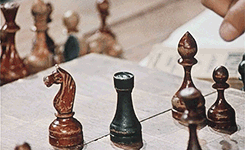

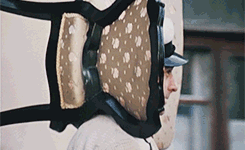
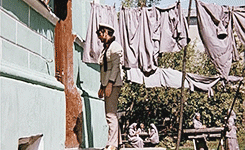


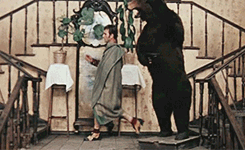
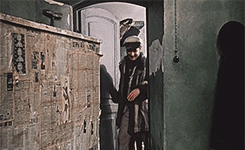
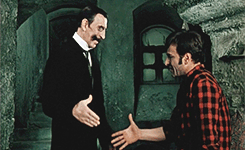
#twelve chairs#12 chairs#dvenadtsat stulyev#ostap bender#great combinator#kisa vorobianinov#archil gomiashvili#sergey filippov#двенадцать стульев#ilf and petrov#ilya ilf#yevgeny petrov#leonid gaidai#russian cinema#russian actor#u.s.s.r. cinema#u.s.s.r. actor#comedy#soviet cinema#gif#mr. stolz
61 notes
·
View notes
Text
A NEW ERA : Russia NT gets ready for the World League
The Russian National Volleyball new coaching staff team has released the expanded list of 21 players for the 2017 FIVB World League.
Russia NT coach once stated that the team that he picked will be “rejuvenated”. Lots of young players combined with the experienced ones. And it is, just as advertised.
Here’s the 21 players list:
Setter :
Sergey Antipkin (Dinamo Moskva)
Dmitriy Kovalev (Ural Ufa)
Pavel Pankov (Kuzbass Kemerovo)
Opposite :
Konstantin Bakun (Dinamo Moskva)
Maxim Zhigalov (Belogorie Belgorod)
Aleksandr Kimerov (Fakel Novy Urengoy)
Aleksandr Chefranov (Gazprom Yugra Surgut)
Middle Blocker :
Ilya Vlasov (Fakel Novy Urengoy)
Vadim Likhosherstov (Fakel Novy Urengoy)
Ilyas Kurkaev (Lokomotiv Novosibirsk)
Igor Filippov (Dinamo Moskva)
Dmitriy Shcherbinin (Dinamo Moskva)
Outside Hitter :
Denis Biryukov (Dinamo Moskva)
Dmitriy Ilinykh (Dinamo Moskva)
Dmitriy Volkov (Fakel Novy Urengoy)
Egor Kliuka (Fakel Novy Urengoy)
Egor Feoktistov (Ural Ufa)
Alexey Spiridonov (Yeniset Krasnoyarsk)
Libero :
Artem Zelenkov (Dinamo LO)
Valentin Krotkov (Zenit Kazan)
Roman Martynyuk (Belogorie Belgorod)
Coach : Sergey Shlyapnikov
Source : Volley.ru
Now while I’m still baffled at some of the names here, I get his point to pick some guys who aren’t used to be on the list before. And after the last Olympics, Russia NT might want to look somewhere new — in Shlyapnikov’s word — to rejuvenate themselves. Well at least this is only for WL and not the EuroVolley. Anyway, good luck to the new coaching staff. Here’s wishing for a good run in the World League and hope these guys would have some fun.
14 notes
·
View notes
Text
‘They can’t beat us fairly’ — Lavrov on Olympic ban of Russia - By RT
‘They can’t beat us fairly’ — Lavrov on Olympic ban of Russia – By RT
HomeWorld News Published time: 11 Feb, 2018 17:32 Get short URL

Russian Foreign Minister Sergey Lavrov. © Alexey Filippov / Sputnik The doping scandal that keeps many Russian athletes from competing in top events, including the ongoing Winter Olympics, was just part of the West’s devious strategy against Moscow, Russia’s foreign minister has said.
Sergey Lavrov said barring…
View On WordPress
0 notes
Text
Putin wanted Russian science to top the world. Then a huge academic scandal blew up.
By Robyn Dixon | Published January 17 at 6:00 AM EST | Washington Post | Posted January 17, 2020 |
MOSCOW — Eight years ago, President Vladimir Putin decreed that Russia must become a leading scientific power. That meant at least five top-100 Russian universities by 2020, and a dramatic increase in the number of global citations of Russian scientific papers.
Now a group at the center of Putin’s aspirations, the Russian Academy of Sciences, has dropped a bombshell into the plans. A commission set up by the academy has led to the retraction of at least 869 Russian scientific articles, mainly for plagiarism.
“This is the largest retraction in Russian scientific history. Never before have hundreds of papers been retracted,” said Andrei Zayakin, scientific secretary of the RAS Commission for Countering the Falsification of Scientific Research. “Before two years ago, there might have been single cases, but not even dozens.”
What went wrong? Many scientists blame Putin’s 2012 order, which provided greater funding but also led to pressure on scientists to churn out multiple papers a year regardless of quality, amid heavy teaching loads.
Critics also contend that Russia’s Ministry of Science and Higher Education fueled the problem. In 2018, Science and Higher Education Minister Mikhail Kotyukov said Russia had to double its publication of research articles. Universities offered contracts and promotions to those who published more papers and sidelined those who failed to.
“You have got this Potemkin village where universities try to report as many papers as possible, but nobody really reads those papers,” said Anna Kuleshova, ethics council chairwoman at the Russian Association of Scientific Editors and Publishers, the country’s largest scientific publishing organization.
The problem goes much deeper, according to scientists working to rescue Russia’s declining international research reputation. Dozens of university rectors have defended or supervised dubious degrees and papers involving plagiarism and falsified data, they claim.
A statute of limitations makes it impossible to rescind degrees awarded before 2010.
The RAS Commission last year called for the retraction of 2,528 research articles in 541 Russian journals that were either plagiarized, duplicates of other articles or involved unclear authorship. By Jan. 6, 263 journals had agreed to retract 869 papers. The commission expects that further retractions will be made in coming months.
Many of the examples involved Russian scientists plagiarizing from other scientific articles while others involved the same scientists publishing more than one paper with substantially the same data. In other cases, a new name may be added to the same research.
Zayakin, a physician, said “publication mills” sprang up as a result of pressure on researchers to publish or lose either their jobs or funding.
“One important driver was the formal approach of the Ministry of Science and Higher Education to university faculty staff who were supposed to publish a certain number of scientific papers regardless of quality,” he said.
He and others formed a group, Dissernet in 2013, to fight fake science and plagiarism in academic articles and degrees, and the sale of authorships and degrees for profit.
“Doctoral theses were being bought and sold for many years,” he said.
In 2018, Dissernet used anti-plagiarism technology and found that 7,251 Russian degrees had been awarded for plagiarized or dubious work in the previous four years, including 529 medical degrees. Most were in economics, teaching and the law.
Another advocate for change, Mikhail Gelfand, professor of bioinformatics and genetics at Moscow State University, said Russian funding and university rankings was based on the number of papers published, so that money and jobs flowed to the unscrupulous and ill-qualified: “Some people are forced to publish, despite the fact they have no time for meaningful research or funding. The teaching load in Russian universities is huge.”
Dissernet has campaigned to revoke plagiarized and faked degrees with limited success. From December 2013 to December 2019, 368 degrees were revoked.
Last year, it examined the heads of 676 Russian higher education institutions and found that 112 had committed violations of academic ethics, including 61 whose degrees involved plagiarism.
Vladimir Filippov, chairman of the Higher Attestation Commission, which coordinates and validates the awards of degrees, said in a 2017 interview with the government-backed newspaper Rossiyskaya Gazeta that the number awarded had halved between 2012 and 2017 from around 24,000 to less than 13,000.
“The main reasons for the decline are stricter requirements toward papers and the improvement of reputation, responsibility and transparency at all stages of attestation,” he said. Zayakin said the drop showed how many flawed degrees were being issued in the past.
In an article last year, he cited the case of a young scientist from Buryatia in Siberia, who plagiarized a thesis by Svetlana Mikhailova of the East Siberian State University of Technology and Management in 2015.
According to Zayakin, the Siberian student used Mikhailova’s work in six research papers that he published under his name, with six co-authors, including the head of a university — a finding upheld in 2018 by the Supreme Court of Buryatia.
Kuleshova said plagiarism was so rife that it had become normal, and that many people hold dubious academic qualifications.
“Before, they were on sale in the Metro. Anyone could buy one on any corner. Now it’s become a bit more difficult. It’s become more expensive, so you can get them, but they will cost about 100,000 rubles,” she said, around $1,600. “There are many professions where this has become the norm. There are so many pseudo-experts who are not real experts.”
In 2016, Dissernet reported that 1 in 9 members of the State Duma, or lower house of parliament, had dubious degrees. A year earlier, it exposed Duma’s then-chairman, Sergei Naryshkin, now the director of foreign intelligence, for plagiarizing more than half of the pages in his economics doctorate.
Naryshkin just shrugged off the accusations and never lost his degree.
Putin’s goal of ensuring that Russia is among the top five countries for research and development in science and technology has so far been frustrated. In 2018 he complained that 40 percent of the academic subjects failed to produce a single research paper worthy of citation.
Kuleshova has an explanation: “The basics of science and scientific interest have been lost. In its place we just have a desire to retain funding, so those who are ready to go for any manipulation are the ones who rule the situation.”
#putinspuppet#putin#putinwork#vladimir putin#president putin#trump putin#russia#worldpolitics#world news#international news#u.s. news
0 notes
Link
On August 10th 2019, 50,000 people rallied in central Moscow to demand free and fair voting for elections to the local government. The immediate cause of the mass protests was the decision of electoral authorities to disallow opposition candidates from running for office by arbitrarily excluding thousands of signatures necessary to get on the ballot. The protests were the largest since a wave of unrest in 2011, and occurred in a context of increasing repression by the government of Vladimir Putin. Political repression alone cannot explain the protests in Moscow, and must be understood in the context of a deteriorating economy, and stagnant standards of living since 2014. At the same time, the continued popularity of Putin can only be understood in the context of the revival or the Russian economy since the collapse of the 1990s. In today's podcast episode, I will be discussing the prudent macroeconomic policies that lay behind the Russian economic boom of the 2000s, the increasing strength of the security establishment in Russia's political economy, and the sapping of economic vitality caused by a stronger state.After the collapse of the USSR in 1991, the Russian economy suffered from a collapse of a magnitude that is difficult to imagine. From 1990 to 1998, per capita income decreased by 42% and male life expectancy declined by almost five years. The causes of this economic disaster are beyond the scope of this podcast, the loyalty many Russians still feel towards Vladimir Putin must be understood in the context of what came before. Vladimir Putin rose to power in the aftermath of the Russian Ruble crisis, and Putin learned from early in his career the importance of economic stability. Between 1999 and 2014, Russia benefited from an unprecedented economic boom as a result of the price of oil soaring from $18 in 1999 to $104 in 2014. GDP (PPP) per capita more than doubled during this period, luxury stores proliferated in Moscow, and Putin has more than restored pensions to Soviet levels. Putin understood that the price of oil could fluctuate wildly, and so the government maintained largest budget surpluses of up to 10% of GDP. During the 2008 global financial crisis, these large surpluses allowed Russia to respond with an aggressive stimulus that shielded the Russian people from global economic fluctuations. Russia has continued to maintain fiscal discipline since the imposition of sanctions and the collapse of oil prices since 2014, even if it has meant painful and unpopular cuts to pensions. As a result, the Russian economy likely has an extraordinary resilience in face of macroeconomic crisis.The ability of the Russian government to maintain large budget surpluses cannot be understood outside of the context of Putin's centralization of political power in his own hands. During the 1990s, managers of privatized state owned firms were able to receive massive subsidies and avoid paying taxes. A deeply flawed privatization process saw a small class of oligarchs accumulate stakes in all of Russia's largest companies, and granted them immense political power. The oligarchs, once macroeconomic stability was restored, invested heavily in their companies to modernize them. However, the corrupt process by which they accumulated their wealth made the oligarchs made them a popular target. Oligarchs with political ambitions, such as Vladimir Gusinski or Mikhail Khodorkovsky, were forced into exile or imprisoned by the state. Vladimir Putin made it clear that oligarchs loyal to Putin would be protected, but those who tried to interfere in politics would be destroyed. A new class of power brokers, individuals linked to the security establishment known as the Siloviki, have taken the oligarchs place, For example, former KGB agent Igor Sechin is the CEO of Rosneft, the state owned conglomerate that has used underhanded tactics to acquire Yukos , TNK-BP, Bashneft and other companies in Russia. Even Vladimir Putin's bodyguards have ascended to governorships and other positions of high power. While it would not be accurate to consider to Siloviki as a unified faction, they have as a group, advocated for increased interference in the market both out of a sense of economic nationalism and a desire to line their own pockets.This combination of economic nationalism and greed has had a deleterious impact on Russia's economy. Russia has seen minimal economic growth since 2014. Although this economic stagnation is partly due to the collapse of global oil prices, and the sanctions placed on Russia after its annexation of the Crimea, much of the blame can be placed on institutional deterioration in Russia. The bargain between the oligarchs and Putin that I mentioned earlier is beginning to break down. Vladimir Yevtushenkov, an oligarch who showed no inkling of disloyalty towards Putin, saw his company seized and faces fines of $2 billion on arbitrary reasons because Igor Sechin wished to control his companies. Foreign Direct Investment has fallen from $40 billion in 2013 to only $10 billion in 2018, as the incentives for doing business in Russia have worsened. The Russian state has been quietly nationalizing natural resource companies and banks to seize the commanding heights of the Russian economy. The Russian state has not proven itself to be a capable manager, with state owned firms consistently under performing their private sector counterparts. Russian SOEs (most of whom are partially privatized) pay shareholders minimum investments and instead redirect investment into capital projects with low returns. Many Russian government run natural resource giants are run for the benefit of their contractors and suppliers, often with connections to the Siloviki, than as rational enterprises. For example, Arkady Rotenberg, Putin's Judo partner, has acquired a fortune of $2.3 billion as a contractor. The politically influential have little incentive to move from rent seeking to entrepreneurial activities, while it is becoming harder and harder for entrepreneurs without connections to gain access to the resources they need to succeed.Russia's politics and economics are nearing an important turning point. The protests in Moscow galvanized a coordinated effort by the opposition to vote for opposition parties acceptable to Putin's government and the ruling United Russia party went from controlling 38 to 25 of all seats. The ruling party performed better outside of Moscow, retaining control of governorships in the country. Anti-Putin sentiment is rising, with polls suggesting Vladimir Putin's approval ratings are near all time lows. Putin's approval ratings have fallen from 90% to 60% showing that although economic stagnation is sapping support for the government, it is still overwhelmingly popular. Although Vladimir Putin's economic prudence will likely keep the Russian economy from facing sudden collapse, it is likely that continued slow economic growth will vitiate public support for his government making his regime more vulnerable to action by the opposition.Selected Sources::Russia's Collapse, Anders AslundA Case Study of a Currency Crisis: The Russian Default of 1998 , Abbigail J. Chiodo and Michael T. OwyangRussia’s Virtual Economy, Clifford GaddyCan Putin keep his grip on power?, D TreismanRussian Siloviki , Rochlitz, Michael; Nomokonov, Vitaly A.; Orttung, Robert; Filippov, Vladimir V.The Role of Oligarchs in Russian Capitalism , Sergei Guriev, Andrei RachinskyThe Russian State’s Size and its Footprint: Have They Increased? Gabriel Di Bella, Oksana Dynnikova and Slavi Slavovwww.wealthofnationspodcast.comhttps://wealthofnationspodcast.com/no-risk-no-reward-a-political-economy-of-vladimir-putins-russia/https://ift.tt/2nsfaUA via /r/Corruption
0 notes
Photo










Kashchey the Immortal (1944)
#kashchey the immortal#aleksandr rou#georgi millyar#sergei stolyarov#galina grigoryeva#sergei filippov#emmanuil geller#talks
9 notes
·
View notes
Text
Mathematical deformation of time helped to understand real quantum systems
Mathematical deformation of time helped to understand real quantum systems
UNITED STATES (VOP TODAY NEWS) – Scientists have found a way to classify quantum channels using time warping. Such a classification will help to identify quantum systems with unusual and interesting properties.
Specialist in mathematical physics Sergey Filippov from MIPT, together with his Polish colleague from the University of Copernicus, found a way to classify quantum channels using time…
View On WordPress
0 notes
Link
لدى سوريا عدة منظومات للدفاع الجوي وكلها روسية المنشأ.
وعدد هذه المنظومات موقع “العهد الإخباري”:
1- منظومة (Gammon S-200/SA-5) الدفاعية:
هي منظومة روسية الصنع تم تصميمها عام 1967، يبلغ مدى صواريخ “إس 200” أكثر من 150 كلم ويمكنها إصابة الهدف بدقة.
© AFP 2018 / ALI SHAYEGAN / FARS NEWS
إس-200
2- منظومة بانتسير- إس1 SA — 19 Pantsir-S1:
نظام دفاع جوي أرض- جو قصير ومتوسط المدى، روسي الصنع صمم من قبل مكتب صناعة الأجهزة (KBP Instrument Design Bureau) وهو تطوير لنظام تنغوسكا. كان المشروع في البداية مخصصا للقوات الروسية، لكن التطوير توقف لسنوات بسبب قلة الموارد ثم أعيد إطلاق المشروع بعد طلب من الإمارات العربية المتحدة التي تبنت تمويل مشروع التطوير سنة 2000 وطلبت تزويدها بـ 50 نموذجا فانطلق المشروع مرة أخرى لتلبية الطلب الإماراتي الذي تعزز بطلبات من دول أخرى كالجزائر وسوريا.
منظومة بانتسير فريدة من نوعها، تحمل 12 صاروخاً مع مدفع رشاش عيار 30 ملم مزود بـ 1400 طلقة…بالإضافة إلى مجموعة رادارية متطورة.
© SPUTNIK . SERGEY SUBBOTIN
بانتسير اس 1
3- منظومة صواريخ “تور إم 1 ” (Tor-m1):
هي منظومة دفاع جوي روسية للارتفاعات المنخفضة والمتوسطة، تعمل من خلال منصات إطلاق ذاتية الحركة، أو من خلال الوحدات والقطع البحرية، يستطيع الطراز البحري منها التعامل مع كافة أنواع الأهداف الجوية من مقاتلات ومروحيات وصواريخ بالستية.
دخلت المنظومة إلى الخدمة الفعلية في عام 1986.
تحمل 8 صواريخ ذات مدى 12 كلم وارتفاع 2 كلم والصواريخ من نوع 9M330.
PVO.GUNS.RU
تور ام 1
4- منظومات SA — 17 Gadfly”:
تعرف هذه المنظومة الدفاعية باسم BUK-M2 (بوك- ام2) وهي قادرة على إسقاط طائرات حربية من نوع الـ”أف-117″ أو “الشبح” الأمريكية. ومن مواصفاتها الفنية:
الطول: 5.5 متر
القطر: 40 سم
الوزن: 720 كلغ
وزن الرأس الحربي: 70 كلغ
السرعة: 1200 م/ث أو ما يعادل 4 ماخ
المدى: 50 كلم
الارتفاع: 25 كلم
عدد الأهداف التي يمكن الرمي عليها في آن واحد: 6 أهداف
مدى الكشف الراداري: 160 كم
مدة الانتقال من نظام المناوبة إلى نظام الإطلاق: 20 ثانية
© SPUTNIK . ALEXEY FILIPPOV
منظومة “بوك-إم2أ” للدفاع الجوي
5- منظومة SA — 8 Gecko:
تعرف هذه المنظومة للدفاع الجوي باسم “9K33” ويطلق عليها في سوريا اسم “اوسا”.
ميزة هذا النظام مرونة الحركة والمناورة العالية…وقدرته على كشف الأهداف حتى في حال التشويش عليه بفضل منظومة الكشف الكهروبصري المزود بها. طول الصاروخ 3.2 متر، ووزنه 130 كغ، وسرعته 500 م/ث أو ما يعادل 2.4 ماخ
© AFP 2018 / VASILY MAXIMOV
9K33
6- منظومة SA — 3 Goa المضادة للطائرات:
ويعرف هذا الصاروخ أيضا بالاسم “S-125 Neva” و لكنه يسمى في سوريا بـ “بيتشورا”.
النظام مزود بجهاز مضاد للإجراءات الإلكترونية ECCM إضافة لذلك فإن رادار البحث والتعقب مزود بكاميرا تلفزيونية يصل مداها لـ 25 كلم وأجهزة رؤية ليلية أيضاً ما يعطيه القدرة على العمل في بيئة مليئة بالتشويش الإلكتروني.
كما تم تحديث عدد غير معروف من بطاريات “سام3 ” التي تملكها سوريا إلى النظام (بيتشورا 2) الذي يمتلك:
— قدرة عالية على مواجهة التشويش الإلكتروني.
— ونظام تعقب راداري ليزري مع أشعة تحت الحمراء بما يبقي الرادار صامتاً خلال فترة التعقب.
— كل المكونات القديمة استبدلت بمكونات رقمية معادلة.
— كل الأسلاك المحورية استبدلت بألياف بصرية.
© AFP 2018 / JUAN BARRETO
S-125 Neva
سبوتنيك
The post بالصور…منظومات الدفاع الجوي السورية appeared first on سوريا اليوم.
0 notes
Text
Phi công Su-25 Nga chiến đấu ngoan cường đến phút chót
Một hình ảnh hiếm hoi đăng tải trên mạng xã hội cho thấy khẩu súng ngắn Stechkin đã được tìm thấy tại hiện trường và đang nằm cạnh 3 băng đạn, trong đó có một băng hết đạn và 2 băng kia còn lại khoảng một nửa.
Súng lục Stechkin (APS) là loại súng thường được trang bị cho phi công chiến đấu Nga. Đây được cho là khẩu súng mà phi công quả cảm đã sử dụng để chống lại phiến quân trước khi hi sinh.
Theo đó, phi công điều khiển chiến đấu cơ Su-25 đã thoát được ra khỏi chiếc máy bay nhưng đã anh dũng hi sinh sau khi chiếu đấu ngoan cường với phiến quân.
Minh chứng cho sự chiến đấu quả cảm của phi công Nga. Ảnh: CIT
Hiện, Bộ Quốc phòng Nga chưa công khai danh tính nhưng xác nhận một phi công đã thiệt mạng “trong lúc chiến đấu với bọn khủng bố”.
Một tài liệu khác cũng được tìm thấy tại hiện trường chính là đề xuất được ký bởi trung tá Sergey Aksenov, chỉ huy nhóm tác chiến không quân Nga đề xuất trao giải thưởng cấp nhà nước cho thiếu tá đã hi sinh về việc hoàn thành nhiệm vụ tại Syria. Đề xuất này được tìm thấy trong túi của người lính cảm tử sau khi anh ra đi.
Nguồn tin của nhóm điều tra độc lập CIT cho biết người phi công đã anh dũng hi sinh hôm 3-2 chính là thiếu tá Roman Filippov của quân đội Nga.
Một phần cánh của chiếc Su-25 bị bắn hạ tại Syria hôm 3-2. Ảnh: Reuters
Trước đó vào ngày 3-2, Bộ Quốc phòng Nga xác nhận một chiếc cường kích Su-25 của quân đội nước này đã bị bắn hạ bởi quân khủng bố trên bầu trời tỉnh Idlib, các tay súng khủng bố sau đó đã sát hại phi công người Nga.Vụ tấn công được tiến hành khi chiến đấu cơ Nga bay qua vùng giảm căng thẳng do Nga- Thổ Nhĩ Kỳ bảo trợ.
Hai nhóm chiến binh, trong đó có một nhóm liên quan đến cựu nhánh al Qaeda ở Syria, đã lên tiếng nhận trách nhiệm bắn rơi cường kích Nga.
Quân đội Nga ngay sau đó đã tiến hành hàng loạt cuộc không kích, san phẳng nơi trú ẩn của quân khủng bố ở tỉnh Idlib của Syria, để trả đũa vụ bắn hạ cường kích Su-25.Ít nhất 30 tay súng cùng nhiều khí tài quân sự đã bị xoá sổ trong chiến dịch này.
Lam Ninh (T.H)
from Quốc tế- Công An Nhân Dân http://ift.tt/2nCtyX2
0 notes
Video
vimeo
Yuri Shwedoff Animated Artworks from Yuri Shwedoff on Vimeo.
Animated artworks video for NCCA CMCA Festival from 21.05.2016.
Special thanks to "Skola Crew" facebook.com/skolacrew/ , KAWAI, Valeriya ‘Waneella’ Sanchillo, Alexandra Stephanova, Lida Kalmikova, Alexey Larionov, Sergey Sergeev, Nikon Filippov and Alexandra Gribas.
Music by incredible - Misha Mishenko itunes.apple.com/ru/artist/misha-mishenko/id634019669
0 notes
